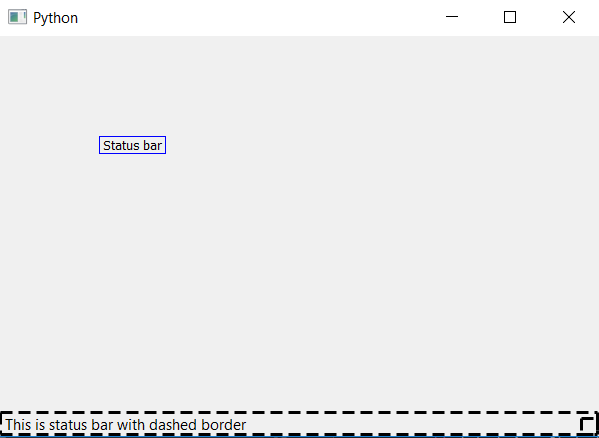En este artículo, veremos cómo crear un borde discontinuo de la barra de estado en la aplicación PyQt5. Generalmente, cuando creamos una barra de estado con un borde, el borde es continuo, pero también podemos hacer un borde discontinuo a continuación, se muestra cómo los bordes normal y discontinuo son diferentes.


Para hacerlo utilizaremos el setStyleSheet()método.
Sintaxis: self.statusBar().setStyleSheet(“borde: 3px negro; estilo de borde: discontinuo”)
Argumento: toma una string como argumento.
Acción realizada: Establece borde discontinuo.
Código:
from PyQt5.QtCore import *
from PyQt5.QtGui import *
from PyQt5.QtWidgets import *
import sys
class Window(QMainWindow):
def __init__(self):
super().__init__()
# set the title
self.setWindowTitle("Python")
# setting the geometry of window
self.setGeometry(60, 60, 600, 400)
# setting status bar message
self.statusBar().showMessage("This is status bar with dashed border")
# setting dashed border to status bar
self.statusBar().setStyleSheet("border :3px black;
border-style : dashed")
# creating a label widget
self.label_1 = QLabel("Status bar", self)
# moving position
self.label_1.move(100, 100)
# setting up the border
self.label_1.setStyleSheet("border :1px solid blue;")
# resizing label
self.label_1.adjustSize()
# show all the widgets
self.show()
# create pyqt5 app
App = QApplication(sys.argv)
# create the instance of our Window
window = Window()
# start the app
sys.exit(App.exec())
Producción :
Publicación traducida automáticamente
Artículo escrito por rakshitarora y traducido por Barcelona Geeks. The original can be accessed here. Licence: CCBY-SA